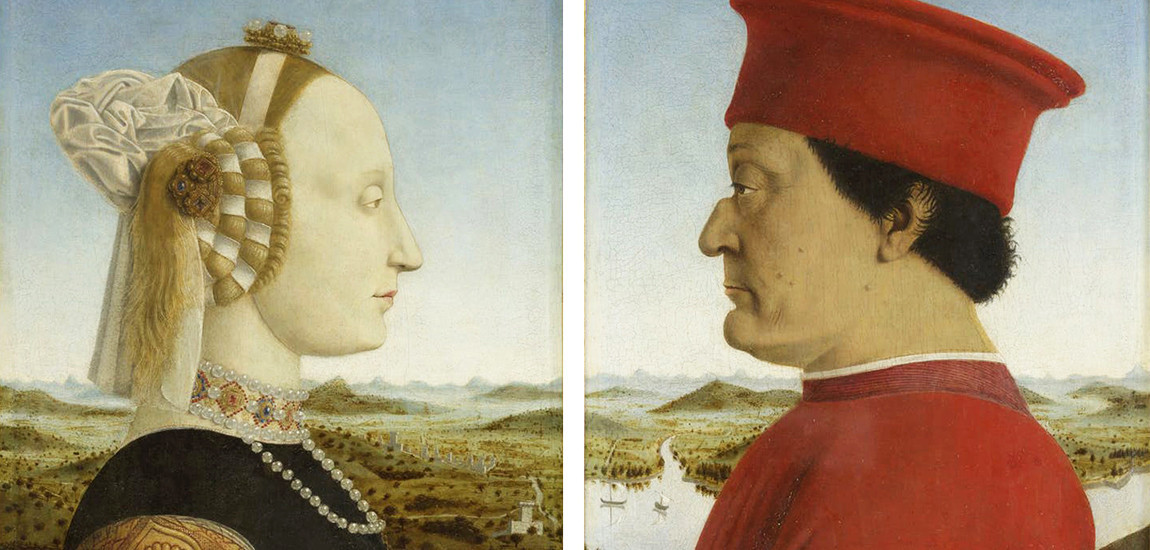
Art Masterpieces: the Double portrait of the Dukes of Urbino
The Double Portrait of the Dukes of Urbino is one of the most famous portraits of the Renaissance, preserved today in the Uffizi Gallery.
This diptych was commissioned in 1465 to Piero della Francesca, by Federico di Montefeltro, Lord of Urbino.
Represented in profile, we see the two spouses Federico da Montefeltro, dressed in red, and Battista Sforza, with blond hair tied up in side buns and wearing a showy pearl necklace.
The contrast between the two figures is striking. She is a pale woman with delicate features, while Federico has dark complexion, black hair and a very angular profile.
In
particular, what catches the eye is the very pronounced nose bridge of the duke,
which looks like it was chiseled with an ax.
Federico had in fact a serious accident that left him disfigured: during a tournament, a spear had penetrated his helmet, piercing his eye.
Some say that in order to get a better view during the battle after his accident, he had his nose reshaped, but this theory was discredited and it was found that the shape of his profile was due to the breaking of his nose in the same accident.
Given his disfigured face, he was never represented from the right side or the front, but this does not mean that Federico ever tried to hide his physical defect, on the contrary, he made it his distinctive sign, thus earning the respect of his contemporaries, who admired the duke's courage.
In the background of the diptych you can see the land over which Federico da Montefeltro and his wife Battista reigned: the city of Urbino, a small city in central Italy, located in the Marche region.
Today a university town that is often ignored by foreign tourists, Urbino was once a very important cultural and artistic center.
Federico da Montefeltro was the illegitimate son of the former ruler of Urbino, and assumed power following a period spent as a mercenary soldier, when his half-brother, heir to the throne, was assassinated.
Perhaps to remove any doubt about the legitimacy of his throne and erase his past, Federico decided to transform Urbino into a cultural center that could rival Florence. And he succeeded.
Urbino was in fact home to Raphael and Bramante, and artists such as Botticelli and Piero della Francesca worked here, author of this diptych, which has now become an icon of the Italian Renaissance.



